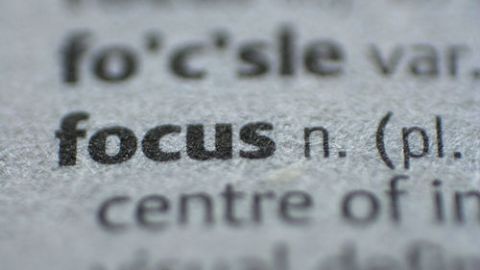To Improve Self-control, Focus on the Long-term: Paying Attention Can Mean Making Better Choices

Which would you rather have: an apple or a Kit-Kat bar? It’s not an easy question. The answer depends on many factors, including how hungry you are, how much you like apples and Kit-Kats, what your mood is like, what time of day it is, when you expect to eat next, and the list goes on. However, for the sake of simplicity, let’s assume you like both foods; you haven’t eaten for over three hours; it’s mid-afternoon; and you’re not on any sort of diet at all – you can eat whatever you’d like. Now, which do you choose?
The answer, as it turns out, is still far from simple. And one of the things that might determine which of the two items you ultimately choose to eat is attention: what are you focused on? What are you thinking about? This is precisely the question studied by a group of researchers at Caltech in a recent study.
Attention can determine choice
The researchers asked non-dieting individuals to look at a series of foods, including apples and Kit-Kats, while in a scanner, and for each food, to answer how much they would want to eat it at the end of the experiment. The participants could be in one of three conditions. In the first, they were asked to focus on the healthiness of the food before making their choice; in the second, to focus on the tastiness of the food; and in the third, to think of whatever came naturally to mind. Importantly, they were instructed to make whatever decision they preferred, regardless of condition.
At first glance, the main finding seems fairly self-evident: people who focused on healthiness made healthier choices. However, keep in mind that these were individuals who were not actively dieting and that these same individuals did not make healthier choices in either the free-thought or the tasty-thought condition.
Moreover, the researchers found that in the healthiness condition, underlying brain activity actually changed as participants evaluated and made their choices. Specifically, activity in the ventromedial prefrontal cortex (vmPFC—an area that is tied to the encoding of value signals and the calculation of value during choice) increased in the healthy condition. And the more health ratings were reflected in vmPFC activity, the more likely it was that an individual would choose to eat the healthy options. As a side-note, in the healthiness condition, brain activity also increased in two specific areas of the left lateral prefrontal cortex that have been linked in the past to cognitive control, working memory, and emotion regulation.
So what does that mean? The right external cues can help us make better choices
So what does that mean for our choices, especially if they have nothing to do with food? The same principle applies not just to healthy food choices, but to choice in general. What you choose to do at any given point—eat a food you probably shouldn’t, spend money you’d rather not—is not predetermined. It depends on any number of momentary considerations. Values are often dynamically constructed – and how exactly they are constructed at a given point can be affected by attention. What are you focusing on? What is salient at the time?
When we focus on the long-term aspects of a given choice, such as healthiness in food, the attention process can actually shift how we value something, even at the level of the brain, and can help us exercise self-control in the immediate term. Cues that help us do this, such as a health cue when we are deciding what to eat, can externally stimulate the same neural networks that are self-activated in individuals who are actively trying to (successfully, I might add) exercise self-control. In other words, we don’t have to try nearly as much, if at all, if we have the right external aids to help at the right time.
The importance of the right cue at the right time
And that final sentence is the crucial point, as we try to use this process to our advantage. Cues surround us all the time and attention goes both ways. If we’re making a food-related choice, any number of external elements can influence our focus. Maybe there’s writing that focuses on taste. Maybe there’s a smell that triggers thoughts of sensory pleasure. Maybe there’s a picture that makes a food look incredibly appealing. All of these cues are contrary to us paying attention to health – and they might make it more difficult to do so.
But if that’s the case, we can take what we’ve learned and create our own health cues, or at the very least, realize that the other cues are subtly influencing our decision and try to take that into account (and again, this applies to everything, not just health and food). The key things to remember are:
(1) Attention matters. What we pay attention to will impact our brains and our choices. And at any given point, our environment is full of some cues. Some are in line with the long-term goals we ourselves have, and so are helpful; but some are opposed to them, and so serve to distract us. Learn to pay attention – and learn to pay attention to what you’re paying attention to. If nothing else, it will give you much better insight into your own thought process.
(2) Timing matters. The right cue will do nothing for you at the wrong time. If you have a reminder for yourself that focuses on health taped to the refrigerator door, but you make your food purchasing decisions at the super market, that reminder won’t do you much good. After all, your choices are limited to what you’ve already bought. Much better to have a reminder that will be present at the moment of the choice that matters (hence some other shopping tactics: not shopping hungry; creating a list beforehand, where you do see your health cue reminder, and sticking to it, though an added benefit might be to write something health-related at the top, as an additional cue).
In this case, the story of self-control is mostly a story of attention. Incidental stimuli can direct your attention in multiple ways and in so doing, influence your ultimate decision. If you are aware of that, you can either play into it, or counteract it; either way, the choice will be placed back in your own hands.





